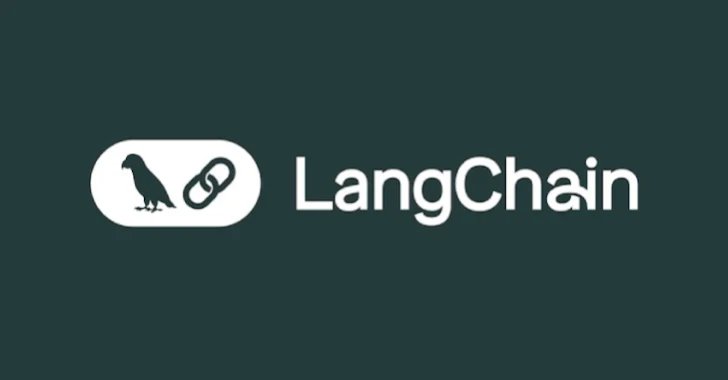Summary Points
-
Vulnerability Discovery: A major security flaw in LangChain’s LangSmith platform, carrying a CVSS score of 8.8, was disclosed. This vulnerability allowed attackers to intercept sensitive data, such as API keys and user prompts, through a malicious proxy disguised as an AI agent.
-
Exploitation Methodology: Attackers could create and share compromised AI agents via LangChain Hub, which, when interacted with, routed user data through the attackers’ servers without detection, risking API misuse and data theft.
-
Consequences of Exploitation: Victims could face unauthorized access to their OpenAI environments, financial burden from increased API usage, and potential leaks of sensitive internal data, leading to significant legal liabilities and reputation damage.
- WormGPT Developments: The article also highlights the emergence of new WormGPT variants designed to facilitate cybercrime, leveraging existing LLMs to provide uncensored and harmful functionalities, showcasing a growing trend in LLM abuse among threat actors.
Underlying Problem
On June 17, 2025, cybersecurity researchers, including Sasi Levi and Gal Moyal, disclosed a critical security vulnerability in LangChain’s LangSmith platform, named AgentSmith by Noma Security. This flaw, which received a CVSS score of 8.8, allowed malicious actors to deploy compromised AI agents via LangChain Hub, posing a grave risk to unsuspecting users. When a user engaged with a tainted agent, their interactions were secretly routed through a proxy server controlled by the attacker. Consequently, sensitive data—such as API keys, personal prompts, and uploaded documents—was exfiltrated without the user’s knowledge, potentially leading to unauthorized access to OpenAI environments and significant financial repercussions.
LangSmith, designed for the development and oversight of large language model applications, meant to streamline user experiences, inadvertently facilitated this exploitation. The vulnerability was responsibly disclosed on October 29, 2024, and was patched on November 6, 2024; however, the incident underscores a broader trend in cybersecurity threats, exemplified by the emergence of new variants of “WormGPT.” This generation of generative AI tools, associated with unethical and illegal activities, highlights the urgent need for heightened vigilance in the domain of LLM security. As these events unfold, the implications for data protection and the integrity of intellectual property remain critical concerns—issues that are now being reported by platforms such as The Hacker News.
Risk Summary
The recent discovery of a critical vulnerability in LangChain’s LangSmith platform poses a significant risk not only to its immediate users but also to the broader ecosystem of businesses and organizations that rely on similar technologies. Exploitation of this flaw, dubbed AgentSmith, allows malicious actors to clandestinely intercept sensitive data—ranging from API keys to proprietary models—during routine operations, thus enabling unauthorized access to vital resources and increasing potential revenue losses through manipulated API usage. Beyond immediate financial impacts, the ripple effects can manifest in the form of heightened legal liabilities, deterioration of user trust, and extensive reputational damage; if compromised data is leveraged in further cyber incursions, the integrity of other interconnected systems could be jeopardized as well. As enterprises increasingly integrate AI solutions, the cascading repercussions of such vulnerabilities become glaringly apparent, underscoring the urgent necessity for robust security measures and vigilance in mitigating associated risks.
Possible Remediation Steps
The swift identification and rectification of vulnerabilities, such as the LangSmith bug that could compromise OpenAI keys and user data, is critical in safeguarding sensitive information from malicious actors.
Mitigation Strategies
- Immediate Patching: Apply software updates to correct vulnerabilities within LangSmith.
- Access Control Review: Tighten user access permissions to minimize exposure.
- Data Encryption: Enhance encryption protocols for sensitive data in transit and at rest.
- Incident Response Plan: Activate an incident response team to manage potential breaches and execute containment strategies.
- User Education: Inform users about potential risks and best practices for securing their credentials.
- Monitoring Systems: Implement rigorous logging and monitoring to detect anomalous activities promptly.
NIST CSF Guidance
NIST Cybersecurity Framework (CSF) emphasizes the importance of identifying risks and implementing protective measures. For specific protocols, refer to NIST Special Publication (SP) 800-53, which provides a comprehensive catalog of security controls necessary for mitigating vulnerabilities.
Continue Your Cyber Journey
Stay informed on the latest Threat Intelligence and Cyberattacks.
Learn more about global cybersecurity standards through the NIST Cybersecurity Framework.
Disclaimer: The information provided may not always be accurate or up to date. Please do your own research, as the cybersecurity landscape evolves rapidly. Intended for secondary references purposes only.
Cyberattacks-V1

